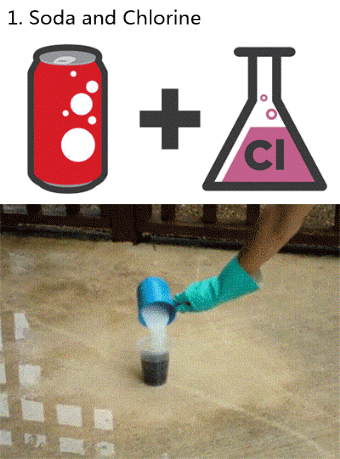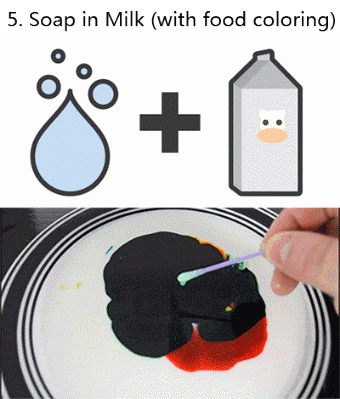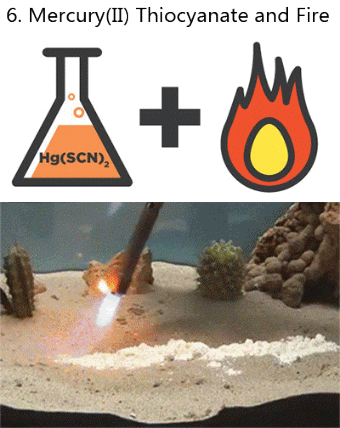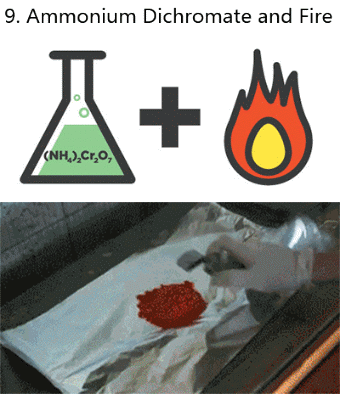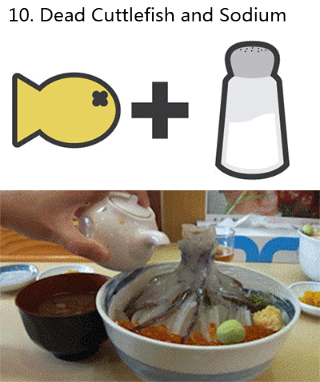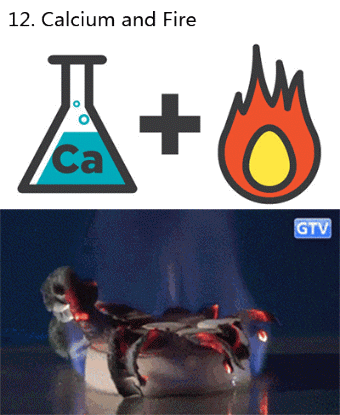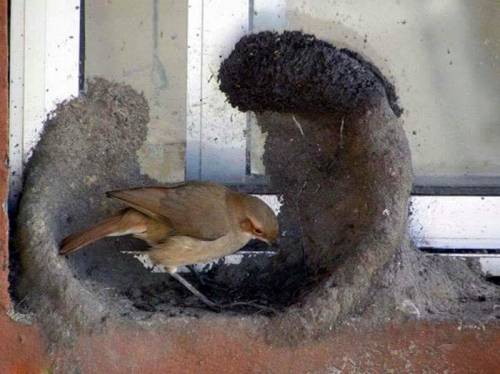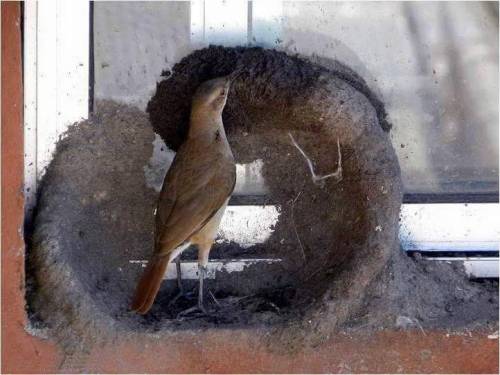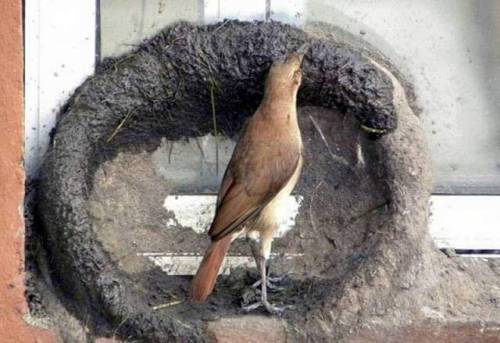How Printing A 3-D Skull Helped Save A Real One

How Printing a 3-D Skull Helped Save a Real One
What started as a stuffy-nose and mild cold symptoms for 15-year-old Parker Turchan led to a far more serious diagnosis: a rare type of tumor in his nose and sinuses that extended through his skull near his brain.
“He had always been a healthy kid, so we never imagined he had a tumor,” says Parker’s father, Karl. “We didn’t even know you could get a tumor in the back of your nose.”
The Portage, Michigan, high school sophomore was referred to the University of Michigan’s C.S. Mott Children’s Hospital, where doctors determined the tumor extended so deep that it was beyond what regular endoscopy could see.
The team members needed to get the best representation of the tumor’s extent to ensure that their surgical approach could successfully remove the entire mass
“Parker had an uncommon, large, high-stage tumor in a very challenging area,” says Mott pediatric head and neck surgeon David Zopf, M.D. “The tumor’s location and size had me question whether a minimally invasive approach would allow us to remove the tumor completely.”
To help answer that question, teams at Mott sought an innovative approach: crafting a 3-D replica of Parker’s skull.
The model, made of polylactic acid, helped simulate the coming operation on Parker by giving U-M surgeons “an exact replica of his craniofacial anatomy and a way to essentially touch the ‘tumor’ with our hands ahead of time,” Zopf says.
Just as important, it also allowed the team to counsel Parker and his family by offering them a look at what lurked within — and, with the test run successfully complete, what would lie ahead.
A ‘pretty impressive’ model
The rare and aggressive tumor in Parker’s nose is known as juvenile nasopharyngeal angiofibroma, a mass that grows in the back of the nasal cavity and predominantly affects young male teens. Mott sees a handful of cases each year.
In Parker’s case, the tumor had two large parts: one roughly the size of an egg and the other the size of a kiwi. The mass sat right in the center of the craniofacial skeleton below the brain and next to the nerves that control eye movement and vision.
“We were obviously concerned about the risks involved in this kind of procedure, which we knew could lead to a lot of blood loss and was sensitive because it was so close to the nerves in his face,” says Karl, who praised the 3-D methodology used to aid his son. “It was pretty impressive to see the model of Parker’s skull ahead of the surgery. We had no idea this was even possible.”
Zopf, working with Erin McKean, M.D., a U-M skull base surgeon, was able to completely remove the large tumor. Kyle VanKoevering, M.D., and Sajad Arabnejad, Ph.D., aided in model preparation.
Through preoperative embolization, the blood supply to the tumor was blocked off the day before surgery to decrease blood loss. A large portion of the tumor was then detached endoscopically and removed through the mouth. The remaining mass under the brain was taken out through the nose.
Doctors took pictures of Parker’s anatomy during the surgery and, later, compared it with pictures from the model. They were nearly identical.
“Words alone can’t express how thankful we are for Parker’s talented team of surgeons at Mott,” says his mother, Heidi. “Parker is back to his old self again.”
Powerful potential
Although medical application of the technology continues to gain attention, it isn’t entirely new. Zopf and Mott teams have used 3-D printing for almost five years.
Groundbreaking 3-D printed splints made at U-M have helped save the lives of babies with severe tracheobronchomalacia, which causes the windpipe to periodically collapse and prevents normal breathing. Mott has also used 3-D printing on a fetus to plan for a potentially complicated birth.
“We are finding more and more uses for 3-D printing in medicine,” Zopf says. “It is proving to be a powerful tool that will allow for enhanced patient care.”
Based on success in patients such as Parker and continued collaboration, it’s a concept that appears poised to thrive.
“Because of the team approach we’ve established at the University of Michigan between otolaryngology and biomedical engineering, the printed models can be designed and rapidly produced at a very low cost,” Zopf says. “Michigan is one of only a few places in the nation and world that has the capacity to do this.”
More Posts from Science-is-magical and Others
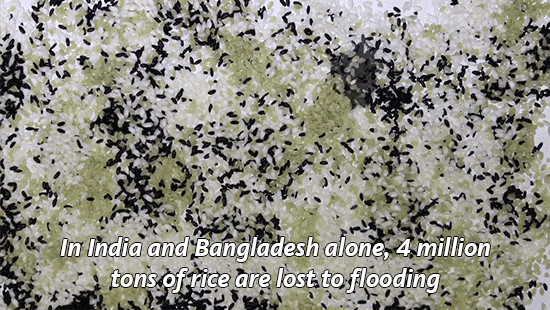
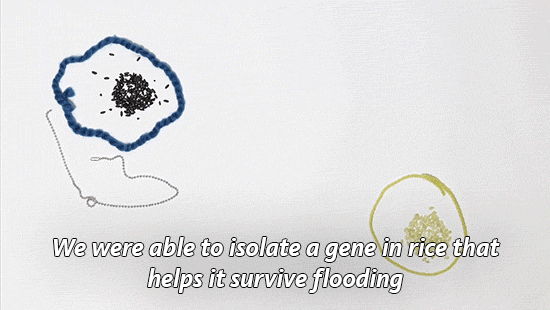
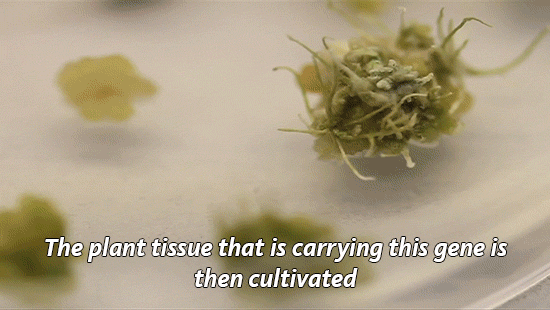
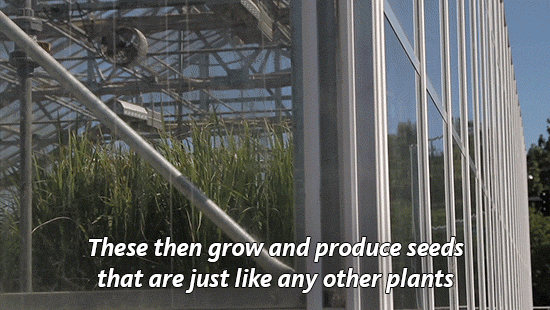
Why we need GMOs to survive climate change
Genetically modified organisms get a bad rap for many reasons, but we’ve actually been genetically altering what we eat since the dawn of human history.
“For 10,000 years, we have altered the genetic makeup of our crops,”explains UC Davis plant pathology professor Pamela Ronald.
“Today virtually everything we eat is produced from seeds that we have genetically altered in one way or another.” (You can read more about Ronald’s thoughts on genetically engineered food here.)
Right now her focus is on rice. It’s one of our basic crops and without it, we would struggle to feed much of the world.
With climate change, we’re seeing an increase in flooding in places like India and Bangladesh, which makes it harder to grow this important food staple.
So Ronald and her lab have developed a flood-tolerant strain of rice. It’s known as Sub1a or “scuba rice” and millions of farmers in South Asia are now growing it in their fields.

Today is National Food Day, a day dedicated to hunger awareness. But as we focus on food insecurity, we need to talk more about how global warming will make the problem worse.
As our climate continues to heat up, it has huge impacts on what foods we are able to grow. Will our crops be able to survive droughts and floods? The University of California leads six labs that are working to develop other climate-resilient crops including chickpea, cowpea and millet.
Find out what other scientists are doing to improve our food.
Absence of Serotonin Alters Development and Function of Brain Circuits
Researchers at Case Western Reserve University School of Medicine have created the first complete model to describe the role that serotonin plays in brain development and structure. Serotonin, also called 5-hydroxytryptamine [5-HT], is an important neuromodulator of brain development and the structure and function of neuronal (nerve cell) circuits. The results were published in the current issue of The Journal of Neurophysiology online.
“Our goal in the project was to close the gap in knowledge that exists on role of serotonin in the brain cortex, particularly as it concerns brain circuitry, its electrical activity and function,” said Roberto Fernández Galán, PhD, Assistant Professor in the Department of Neurosciences at Case Western Reserve University School of Medicine. “For the first time, we can provide a complete description of an animal model from genes to behavior—including at the level of neuronal network activity, which has been ignored in most studies to date.”
Dr. Galán and his team used high-density multi-electrode arrays in a mouse model of serotonin deficiency to record and analyze neuronal activity. The study supports the importance of the serotonin which is specified and maintained by a specific gene, the Pet-1 gene – for normal functioning of the neurons, synapses and networks in the cortex, as well as proper development of brain circuitry. Serotonin abnormalities have been linked to autism and epilepsy, depression and anxiety. By more fully elucidating the role of serotonin in the brain, this study may contribute to a better understanding of the development or treatment of these conditions.
“By looking at the circuit level of the brain, we now have new insight into how the brain becomes wired and sensitive to changing serotonin levels.” added Dr. Galán.
dude seeing these Mega high quality images of the surface of mars that we now have has me fucked up. Like. Mars is a place. mars is a real actual place where one could hypothetically stand. It is a physical place in the universe. ITS JUST OUT THERE LOOKING LIKE UH IDK A REGULAR OLD DESERT WITH LOTS OF ROCKS BUT ITS A WHOLE OTHER PLANET?



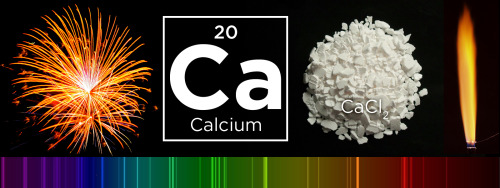


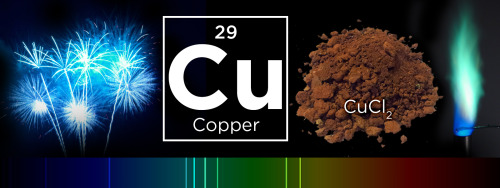

What makes fireworks colorful?
It’s all thanks to the luminescence of metals. When certain metals are heated (over a flame or in a hot explosion) their electrons jump up to a higher energy state. When those electrons fall back down, they emit specific frequencies of light - and each chemical has a unique emission spectrum.
You can see that the most prominent bands in the spectra above match the firework colors. The colors often burn brighter with the addition of an electron donor like Chlorine (Cl).
But the metals alone wouldn’t look like much. They need to be excited. Black powder (mostly nitrates like KNO3) provides oxygen for the rapid reduction of charcoal © to create a lot hot expanding gas - the BOOM. That, in turn, provides the energy for luminescence - the AWWWW.
Aluminium has a special role — it emits a bright white light … and makes sparks!
Images: Charles D. Winters, Andrew Lambert Photography / Science Source, iStockphoto, Epic Fireworks, Softyx, Mark Schellhase, Walkerma, Firetwister, Rob Lavinsky, iRocks.com, Søren Wedel Nielsen

what the article doesn’t tell you is that this has happened once before, and she forgot how to use her drill. she remembered how to drill later one, but then she shut down again for no clear reason. it is still unclear if she remembers how to drill. i love her so much

‘Smart fat cells’ cross blood-brain barrier to catch early brain tumors
An MRI contrast agent that can pass through the blood-brain barrier will allow doctors to detect deadly brain tumors called gliomas earlier, say Penn State College of Medicine researchers. This ability opens the door to make this fatal cancer treatable.
Gliomas are brain tumors that arise from glial cells, which help nerve cells to stay connected and send signals throughout the body.
Cancerous gliomas are uniformly fatal, with a median survival rate of 14 months from the time of diagnosis. But a new nanotechnology approach developed by Xiaoli Liu and Madhan Kumar in the Department of Neurosurgery could transform gliomas from a death sentence into a treatable condition.
Patients diagnosed with a malignant glioma can undergo surgery, chemotherapy and radiation to destroy the tumor, but the cancer will return.
“Patients typically don’t die from the tumor they initially presented with. Rather, they die from new tumors that come back in other parts of the brain,” said James Connor, Distinguished Professor of Neurosurgery.
These new gliomas tend to grow quickly and are often resistant to treatment because they spring from cancer cells that survived the first therapeutic assault. Glioma patients have follow-up MRIs to detect new brain cancers but the tests do not catch the tumors early enough to save lives.
That is because contrast agents used to outline gliomas on an MRI can only pass the protective blood-brain barrier once the tumors have grown large enough to cause damage to the barrier. Until then, the blood-brain barrier blocks 98 percent of small molecules and all large molecules from entering the brain.
To overcome this deadly limitation, Penn State researchers created “smart fat cells” called liposomes that can pass the blood-brain barrier in mice, seek out tiny cancerous gliomas like heat-seeking missiles and light them up on an MRI. The liposomes are loaded with the most commonly used contrast agent, Magnevist. On their surface, the liposomes are studded with proteins that target receptors on glioma cells.
The new contrast agent delivery system is more sensitive than traditional contrast-enhanced MRI, Connor said.
The researchers found that the liposomes entered the brain in healthy mice with uncompromised blood-brain barriers. Both the conventional and the new technique found large gliomas in mice with cancer, but only the liposome-encapsulated agent was able to detect smaller early-stage tumors. “The goal is to be able to get down to detecting single cancer cells,” Connor said.
The study was published in Journal of Neuro-Oncology.
It is not exactly known how the liposomes get past the intact blood-brain barrier, but they apparently do it without causing damage. In the study, mice showed no harm from the treatment.
This novel approach is an alternative to ultrasound, another promising method researchers are studying to get therapeutic agents into the brain. Ultrasound, however, causes temporary disruption to the blood-brain barrier, which allows not only the therapeutic agent to enter the brain, but also blood which could have medical implications.
“Ultrasound, with all of its good qualities, is disruptive to the blood-brain barrier, whereas we can get an agent to cross it without causing disruption.” Connor said.
The researchers said that in the future, smart fat cells will deliver chemotherapeutic drugs, along with contrast agents, to brain tumor patients so that cancer cells can be detected and wiped out in one step. They recently presented research on these next-generation liposomes at the Society for Neuro-Oncology meeting in San Antonio.

To help me refer my chemistry resources to students who seek help, I made a list of all the chemistry master posts I created in the past. Please enjoy and don’t forget to message me if any other chemistry questions arise or if you found anything in this post helpful!
General Chemistry 101 // Contains helpful websites, practice tests, study guides, and tips.
Steps to Balancing Chemical Equations // A 10 step guide to solving unbalanced chemical equations. Practice problems are provided at the end!
Ideal Gas Laws // A little introduction to the history of ideal gas laws and a breakdown of each equation. Also, it contains resources to learn more about them, practice problems, and a personal tip on how I tackle problems!
Electrochemistry Q // I got asked about galvanic cells. With my best attempt, I answered with basic definitions and posted some good websites! However, my knowledge grew about this topic so ask any further questions in my ask.
How I Survived Organic Chemistry // I provide tips on how to study and prepare for organic chemistry.
Organic Chemistry Synthesis Q // My old organic chemistry professor gave us amazing roadmaps of the syntheses we learned in organic chemistry I (Alcohol, alkyne, alkene, epoxide).
Emil Fisher // A short history post about Emil Fisher and his work with fisher projections. Linked are some practice problems on fisher projections which are my favorite!!
NMR // Another short history post but about nuclear magnetic resonance spectroscopy. Like before, practice problems are linked in the description!
A Master Post of Chemistry Resources // My favorite master post of all time. It contains websites with information and practice problems for every subject in chemistry.
How To: Pass and Prepare for A Chemistry Exam // Chemistry exams can be pretty stressful but they don’t have to be! :-)
Tips for Organization // I talk about how to organize your chemistry notes and binders.
Pursuing A Chemistry Degree Q // Just a little something for students who want to major in chemistry but don’t know if they should do a B.A. or B.S. (Valid for the USA, not sure if other countries do the B.A./B.S. system).
Hopefully, I’ll be updating this with more resources in the future! Don’t forget to check out my “Dummies Guide to Physics”! Another good master post that isn’t related to chemistry.
- TheChemistryNerd
-
 iris-in-the-dark-world liked this · 6 years ago
iris-in-the-dark-world liked this · 6 years ago -
 dearkurisu liked this · 6 years ago
dearkurisu liked this · 6 years ago -
 science-is-magical reblogged this · 8 years ago
science-is-magical reblogged this · 8 years ago -
 ragnarok-paper-scissors liked this · 8 years ago
ragnarok-paper-scissors liked this · 8 years ago -
 yourbestdeal liked this · 8 years ago
yourbestdeal liked this · 8 years ago -
 yingcao3349-blog liked this · 8 years ago
yingcao3349-blog liked this · 8 years ago -
 inlovingmemoryofwhenicared reblogged this · 8 years ago
inlovingmemoryofwhenicared reblogged this · 8 years ago -
 deesarrachi reblogged this · 9 years ago
deesarrachi reblogged this · 9 years ago -
 a-fashion-killa reblogged this · 9 years ago
a-fashion-killa reblogged this · 9 years ago -
 theprincessofthepants reblogged this · 9 years ago
theprincessofthepants reblogged this · 9 years ago -
 rheintochter reblogged this · 9 years ago
rheintochter reblogged this · 9 years ago -
 wmctalon reblogged this · 9 years ago
wmctalon reblogged this · 9 years ago -
 mimimyers1214-blog liked this · 9 years ago
mimimyers1214-blog liked this · 9 years ago -
 go3dprinting reblogged this · 9 years ago
go3dprinting reblogged this · 9 years ago -
 halotechnologies-blog liked this · 9 years ago
halotechnologies-blog liked this · 9 years ago -
 polytelic reblogged this · 9 years ago
polytelic reblogged this · 9 years ago -
 hobbitron-3000 reblogged this · 9 years ago
hobbitron-3000 reblogged this · 9 years ago -
 verolynne reblogged this · 9 years ago
verolynne reblogged this · 9 years ago -
 theethicsofeverything-blog liked this · 9 years ago
theethicsofeverything-blog liked this · 9 years ago -
 thebaddragon reblogged this · 9 years ago
thebaddragon reblogged this · 9 years ago -
 thebaddragon liked this · 9 years ago
thebaddragon liked this · 9 years ago -
 pedanticlecturer reblogged this · 9 years ago
pedanticlecturer reblogged this · 9 years ago -
 go3dprinting liked this · 9 years ago
go3dprinting liked this · 9 years ago -
 queenofeire liked this · 9 years ago
queenofeire liked this · 9 years ago -
 tote-junge-blog liked this · 9 years ago
tote-junge-blog liked this · 9 years ago -
 pinhaaan liked this · 9 years ago
pinhaaan liked this · 9 years ago -
 cccaamm3 reblogged this · 9 years ago
cccaamm3 reblogged this · 9 years ago -
 smparticle liked this · 9 years ago
smparticle liked this · 9 years ago -
 dreamer-lu liked this · 9 years ago
dreamer-lu liked this · 9 years ago -
 drtruth8 liked this · 9 years ago
drtruth8 liked this · 9 years ago -
 fauxari liked this · 9 years ago
fauxari liked this · 9 years ago -
 runecestershire liked this · 9 years ago
runecestershire liked this · 9 years ago -
 mythologynut01 reblogged this · 9 years ago
mythologynut01 reblogged this · 9 years ago -
 mythologynut01 liked this · 9 years ago
mythologynut01 liked this · 9 years ago -
 well-fuck-its-science liked this · 9 years ago
well-fuck-its-science liked this · 9 years ago -
 forkandknife liked this · 9 years ago
forkandknife liked this · 9 years ago -
 gustavo-os liked this · 9 years ago
gustavo-os liked this · 9 years ago -
 thatqueerchick liked this · 9 years ago
thatqueerchick liked this · 9 years ago -
 theweaboowitch liked this · 9 years ago
theweaboowitch liked this · 9 years ago
